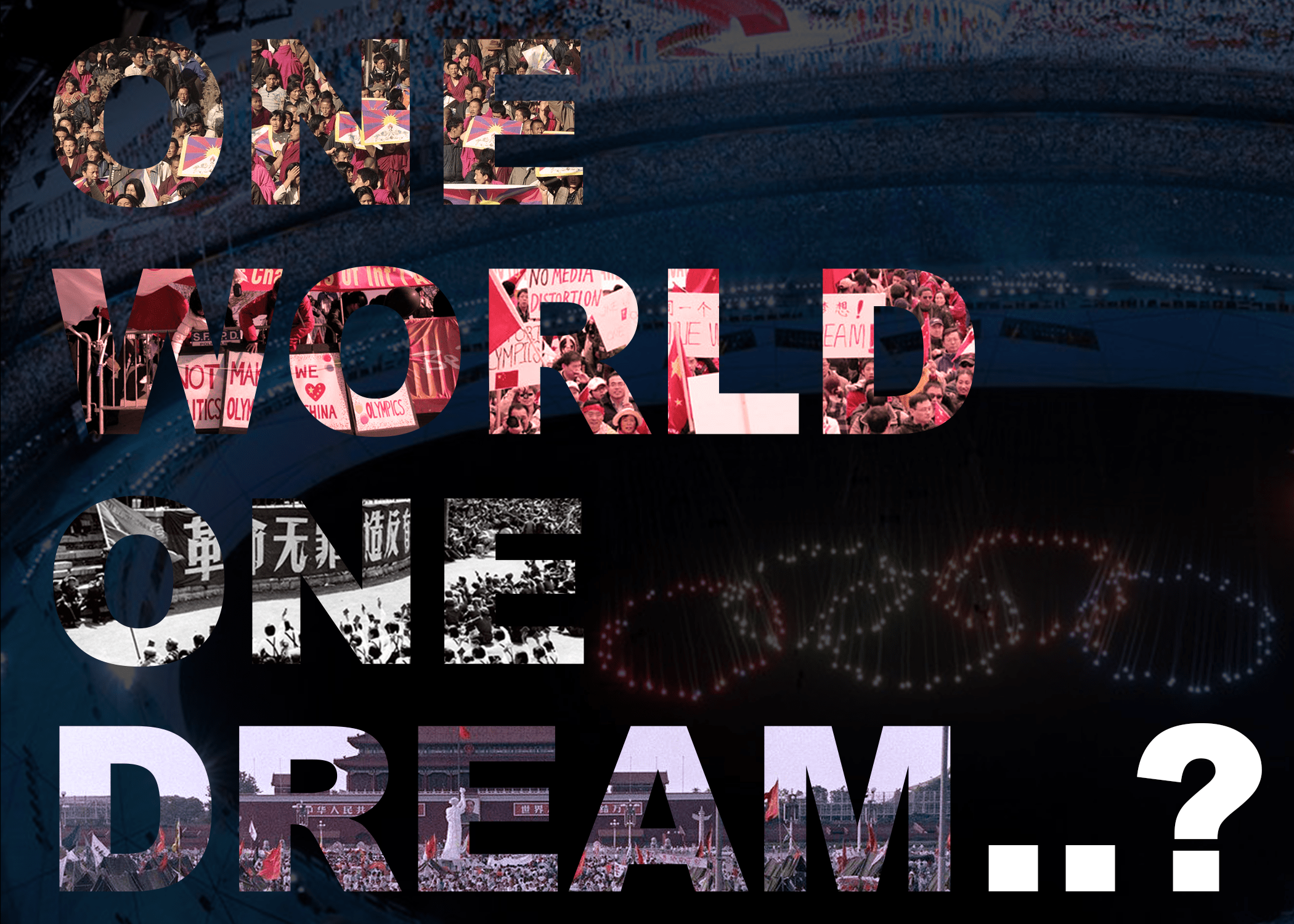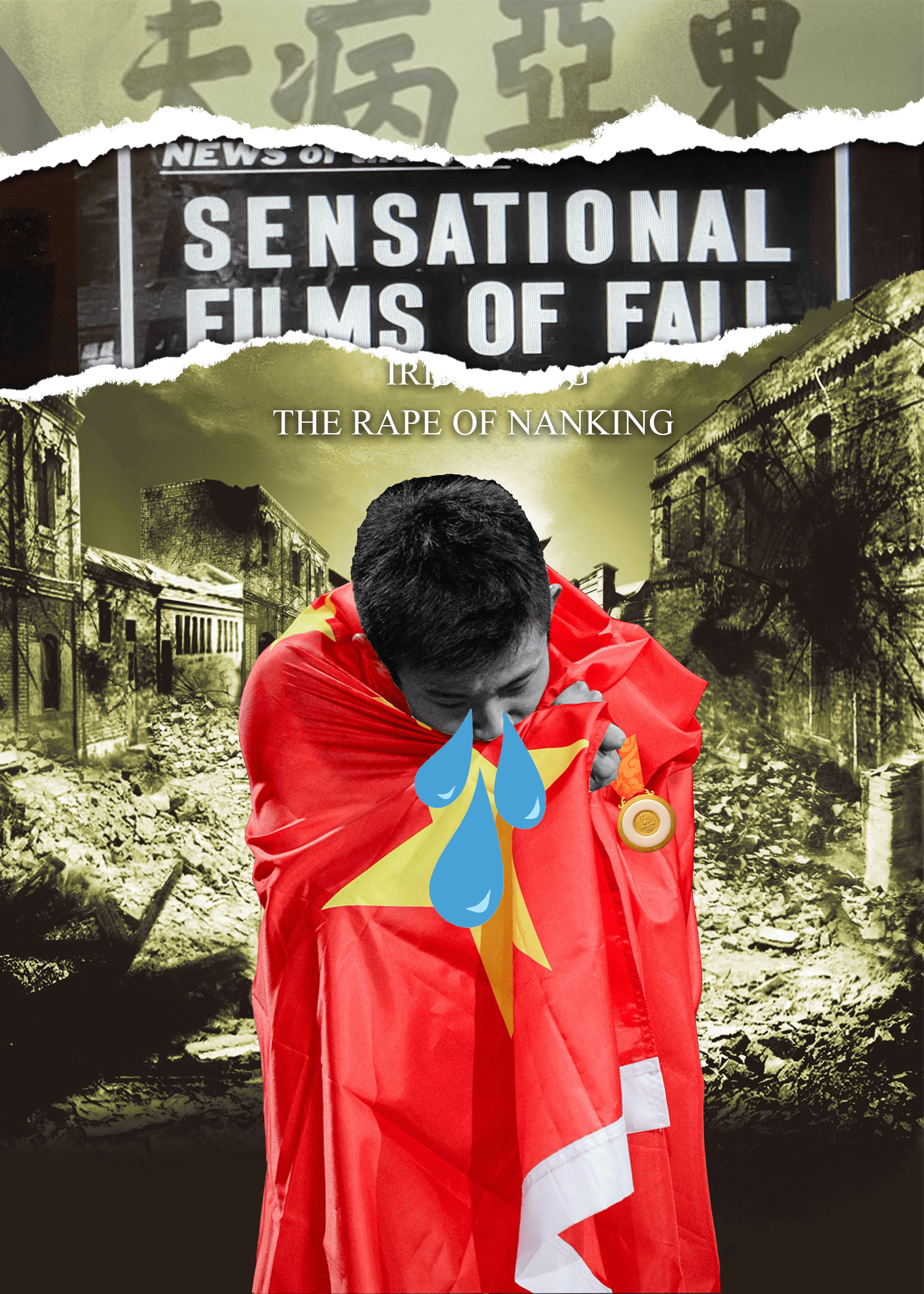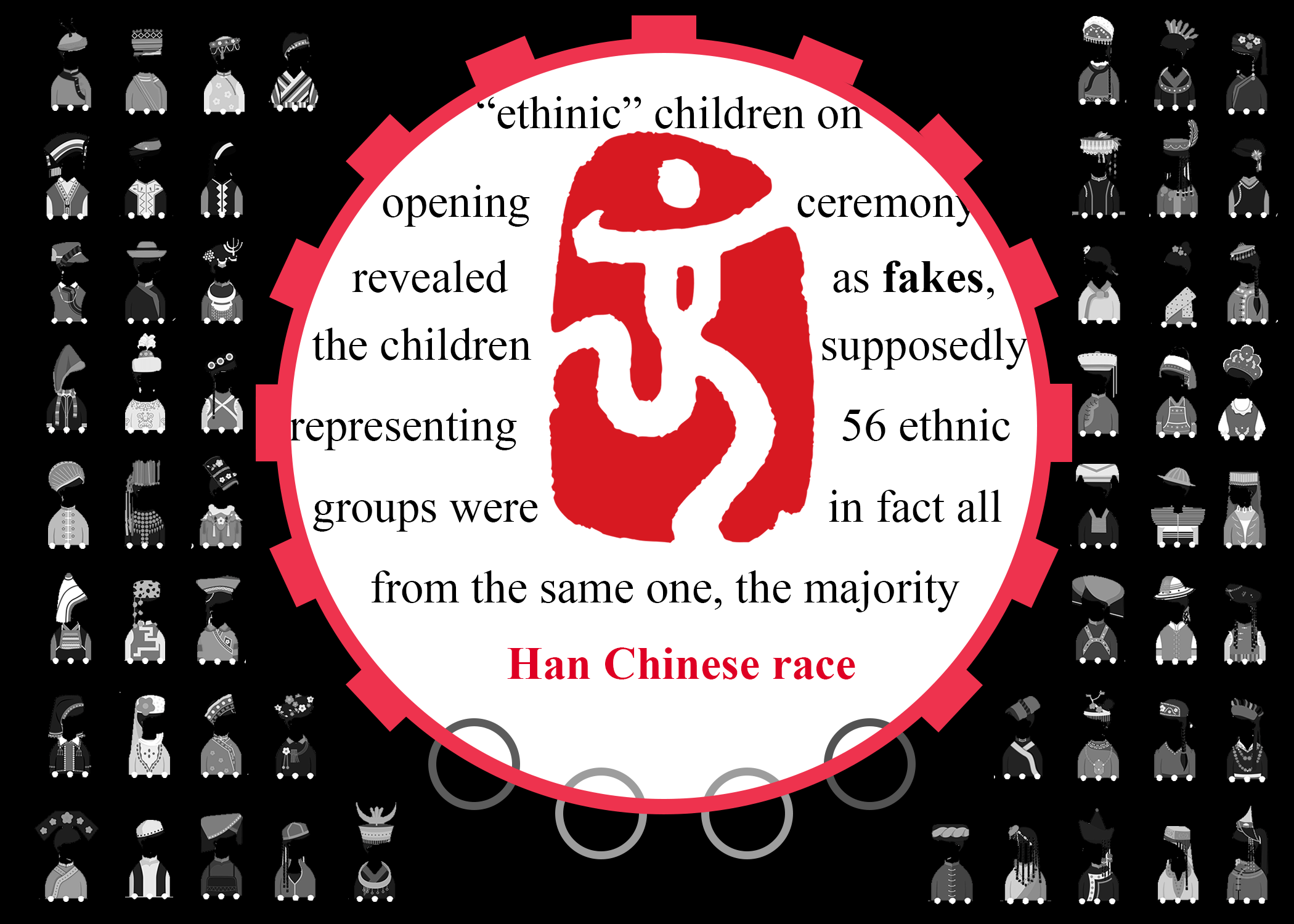The Metropolitan Museum of Art (“the Met”) is one of the US’s largest museums and a major tourist attraction. Despite its worldwide renown, declining worldwide attendance led the museum to rethink its brand identity and embark on a change in 2013. The Met has been seen as an exclusive, elite institution for a long time. According to research, only 45% of visitors agreed with the statement that the place was “for people like them,” which urges the administration to create a bona fide marketing department and rebrand (Roper). This assignment would focus on one specific change of the museum’s education program – the new interactive map bundled with videos and fun facts under the label “#MetKids.”

Before the Rebrand
The Met envisioned itself as “a center of creativity,” but its education program primarily served an intellectual audience of artists, K-12 teachers, and global scholars. Some of the Met’s family guides show an awareness of engaging children and producing kids-friendly content (see fig.1). However, the Met has been treating “kids” en masse – sometimes even without differentiating them from adults, believing “children can handle the same programs that interest their parents… if a performance is dynamic and entertaining, age is generally not a factor” (Cates).
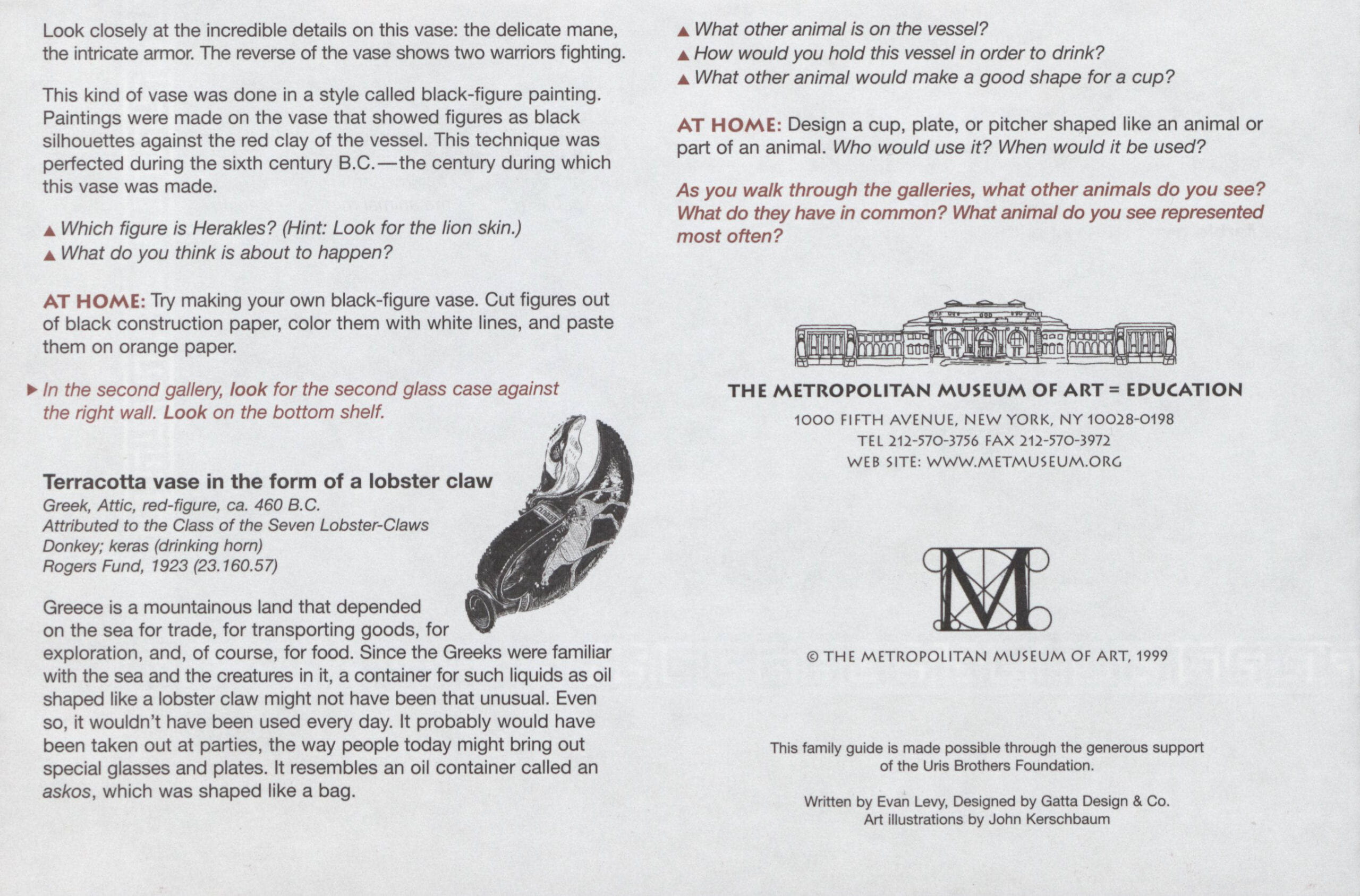
The Aspirational Plan – #MetKids
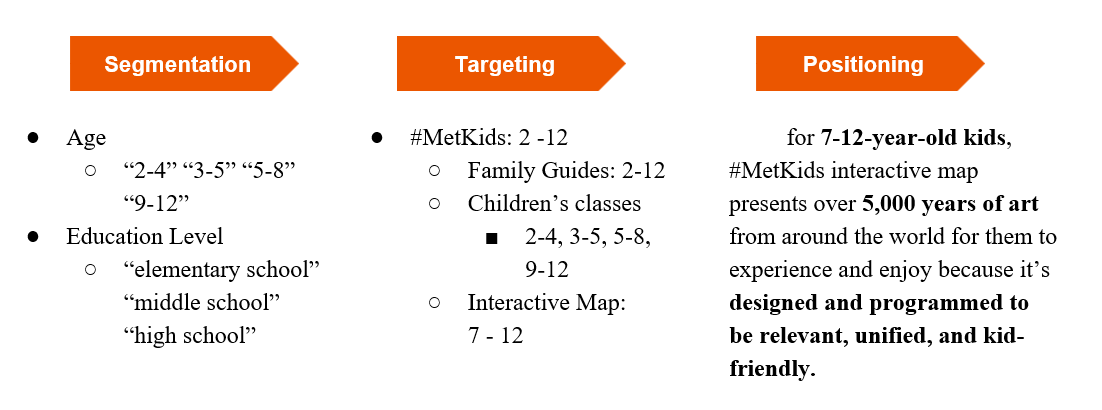
Since 2013, the Met started to rethink its positioning and increase its relevance, coherence, and reach. To increase its relevance to the next generation, the Met starts to segment its young audience according to age and education level. As kids of different ages and education levels have different cognitive abilities and thus should be served differently, this segmentation transforms the heterogenous group “kids” into more homogenous demographic and behavior subgroups.
The new education program #MetKids broadly targets the Met’s young audiences from 2 to 12 years old, with each product or service targeting a more specific audience. In detail, while redesigned family guides are for all ages (see fig.2) and children’s classes are tailored for kids of different ages (see fig.3), the new interactive map targets 7–12-year-olds (see fig.4). Despite being neglected before, this audience base is crucial for the Met because young Gen Z audiences are the next generation of visitors and donors, and wealthy families with an annual income above $200k have always been their major supporters (Bingham). Research shows young Gen Z are increasingly attracted to interactive experiences (Bingham). Hence, competitors’ moves – like the Museum of Art and Design’s Studio Sunday and MoMA Teens – add to the urgency to address this vital audience base in a new way (“Studio Sundays,” Zwicky).


Accordingly, the map is positioned as: for 7-12-year-old kids, #MetKids interactive map presents over 5,000 years of art from around the world for them to experience and enjoy because it’s designed and programmed to be relevant, unified, and kid-friendly.
The Action Plan – The Interactive Map
Product



In product development, kids from all over the world are involved so that the map speaks their language. Graphics like the giant red button with “PUSH” on its welcome kids by making the experience intuitive, easy, and rewarding (“Sensitive Technology” 9). It also speaks to kids in a friendly tone with simple dictions like “what is this made of” instead of “medium” in the grown-up version. Along with vivid color schemes, the map communicates the first impression of easy-going and fun for children, circumventing “first-time challenges” and children’s anxiety lacking computer knowledge (“Sensitive Technology” 10). Further, the map connects with its audience with interactive cues like “look … “imagine…” “draw a picture of…” which forms emotional bonds with kids by directly addressing them and motivating them to wield their creativity (“Sensitive Technology” 26). In doing so, the Met empowers kids to explore the museum by themselves, without relying on their parents or educators to guide them.An essential node of the new education program is the interactive map bundle with videos and fun facts. As stressed in its positioning, the Met drastically simplifies its gigantic archive and condenses them into one map (see fig.5). However, that could still feel too overwhelming at first glance, so the Met again reduces the complexity by allowing kids to “Hop in the Time Machine” (see fig.6). After selecting time periods, geography, and “big ideas” (like inventions, creatures, mythology, etc.), kids would be given a few artifacts they can select from. This is followed by an interface spotlighting on one artifact (as in fig.4) offering basic information, fun facts, and interactional cues for children to “Watch” explanatory or kids-produced videos about the artifact, “Discover” interesting features on the artifact, “Imagine” a scenario involving the artifact, and “Create” at-home art projects inspired by the artifact.
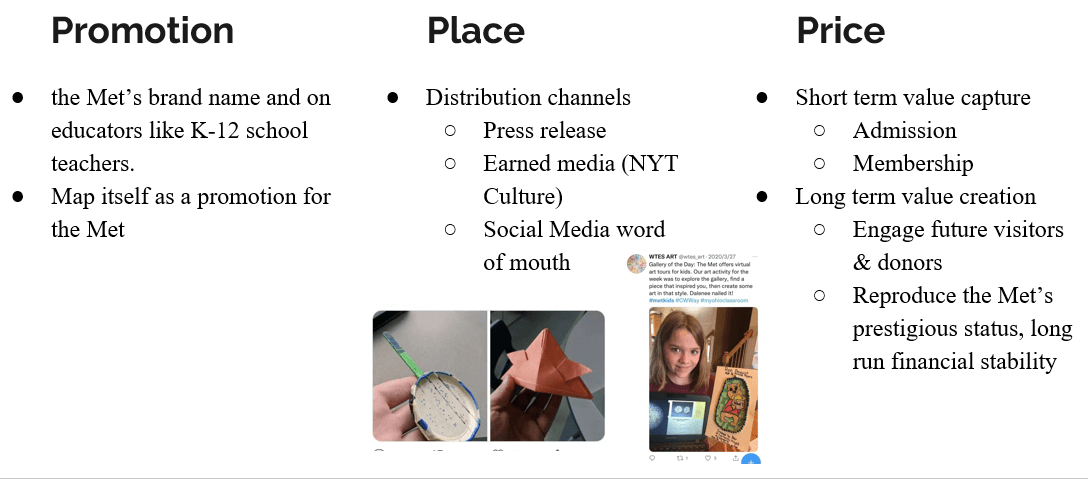
The map’s promotion primarily relies on the Met’s brand name and educators like K-12 school teachers. The launch is communicated to kids and their parents through press releases, earned media like New York Times Culture and smaller online websites, and word of mouth on social media. The map itself also serves as a promotion for the Met’s physical experience, showing its renewed brand identity and relevance. The Met is exempted from the financial burden of this service since Bloomberg Philanthropies provided its funding (Maloney). Though it could be argued that the product would bring short term values like more admission revenues and membership subscription, the program could be seen as a form of long-term value creation that engages the museum’s future visitors and donors, reproducing the Met’s position as a prestigious institution and securing its financial stability in the long run.
Outcomes and Insights
As a result, #MetKids won the 2016 MUSE Award and contributed to the overall success of the rebrand. In 2016, the Met attained record-high attendance of 7 million and 31 million website visitors, increased visitors under age 35 to 37% of total visitors, and TripAdvisor Travelers’ Choice Award as the #1 museum in the world.
The success of #MetKids shows the possibility of extending the boundaries of museum experiences to the online space. As a digital companion “before, during, and after a visit to the Met,” #MetKids shows museum is not just a physical experience but also a node for extracurricular learning, social interaction, and personal development. The map could further be seen as a template to create an immersive environment for Gen Z, the “digital natives,” to engage in. it shows how synthetic reality technologies could be used to enhance user experiences and lays the groundwork for future innovations (“Meet Dawn” 34).
Owing most of its content to a collaboration between educators, curators, conservators, researchers, and kids themselves, the program also underlines the importance of putting users at the center of the design and a multidisciplinary approach (“From Innovation to Impact” 17). Most importantly, #MetKids shows how a better user experience could be built by “gaining empathy and understanding of the needs of customers” and letting users’ needs guide the choices of tools, objects, and technology (“From Innovation to Impact” 16).
Works Cited
Zwicky, Calder. “Moma: Introducing Teens.moma.org.” InsideOut, www.moma.org/explore/inside_out/2013/08/05/introducing-teens-moma-org/.
“Annual Report 2012 & 2013.” American Museum of Natural History | New York City, 2013, www.amnh.org/content/download/70955/1216091/file/AMNH_ANNUAL%20REPORT_FY12-13.pdf.
Bingham, Greer. “Are Museums Still Relevant in the Digital Age?” Www.ubimo.com, 18 Dec. 2019, www.ubimo.com/blog/articles-and-research/museum-attendance-by-visitor-demographics/#:~:text=Results%20showed%20that%20museums%20are,compared%20to%20the%20national%20average.
Cates, Meryl. “Bring the Kids Celebrates Another Successful Season.” Metmuseum.org, The Met, 3 July 2014, www.metmuseum.org/blogs/now-at-the-met/2014/bring-the-kids.
Education and Concerts & Lectures, The Metropolitan Museum of Art, 2013, www.metmuseum.org/-/media/files/about-the-met/annual-reports/2012_2013/education-concerts-lectures.pdf.
“From Innovation to Impact.” Frog Insight Report, Frog, info2.frogdesign.com/en/from-innovation-to-impact.
Levy, Evan, and John Kerschbaum. “The New Greek Galleries: a Family Guide.” The Met: Watson Library Digital Collections, The Met, 1999, libmma.contentdm.oclc.org/digital/collection/p15324coll10/id/150778.
Maloney, Jennifer. “Foundation Gift Brings Museums App Power.” The Wall Street Journal, Dow Jones & Company, 20 June 2013, www.wsj.com/articles/SB10001424127887324577904578555852506511038.
Mandel, Nancy. “Family Guides and Art Hunts in the Digital Collections.” Metmuseum.org, The Met, 19 Nov. 2014, www.metmuseum.org/blogs/in-circulation/2014/family-guides.
“Meet Dawn: The Customer of the Future.” Lippincott, lippincott.com/customer-of-the-future/meet-dawn/.
“The Met.” Wolff Olins, www.wolffolins.com/case-study/the-met/.
Roper, Peter. “The Met Rebrand and Broadening Its Reach and Appeal – Interview.” Marketing Magazine, 21 Oct. 2016, www.marketingmag.com.au/hubs-c/the-met-rebrand/.
“Sensitive Technology.” Lippincott, 8 Apr. 2020, lippincott.com/insight/sensitive-technology/.
“Studio Sundays January 2010.” Museum of Arts and Design: Press Room, madmuseum.org/press/releases/museum-arts-and-design-studio-sundays-january-2010.
[1] According to the museum’s Marketing SVP, the rebrand aims to “increase reach to a more diverse and broader audience,” “make sure [they] are relevant to [the current audience] and the next generation,” and “simplify and create greater clarity in the communications and the experience.”
[2] Age is segmented into overlapping intervals like “2-4,” “3-5,” “5-8,” and “9-12.”
[3] Education level is divided into “elementary school,” “middle school,” and “high school.”











